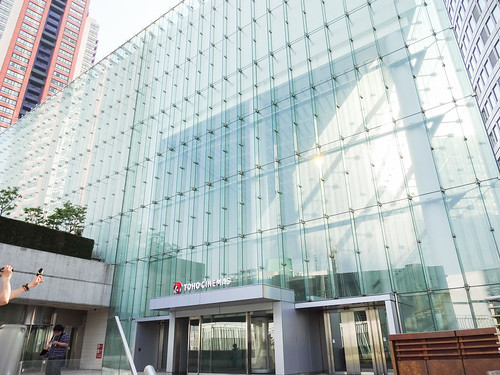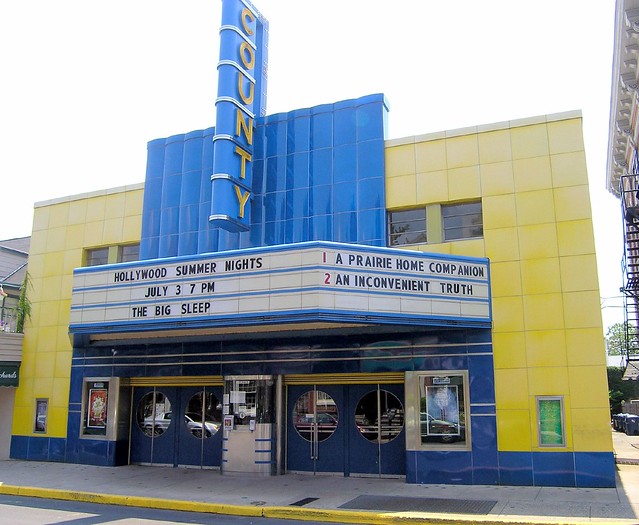The decline of the movie theater seems inevitable. While profits may be decent right now, it has come at a cost to the movie watcher. A third of the industry’s revenue is from food concessions, which generally taste gross and overpriced. People complain that theaters are dirty, noisy, uncomfortable, and stuffed with previews. Most people don’t want to bother. With cheap big-screen televisions widely available and on-demand viewing so easy, why would anyone go to a theater?
Emphasize Personal Relationships Within Society
While private home viewing has its benefits, the film theater will always have one important advantage: lots of people. Human beings crave to be around other people. Being part of a large audience is almost a necessity for artistic events. The power of suggestion makes us enjoy a movie a lot more if people around us are enjoying it. We subconsciously feed off the feelings and attitudes of those around us, building personal layers atop what we see on the screen and a general consensus of beliefs. Have you ever sat through a movie in an empty theater? Your impression would have been a lot different if the theater had been packed, I guarantee it.
The movie is just one part of the overall experience. Whether at a night out with friends, on a date with a significant other, or as part of a family get-together, the movie compliments your group experience, which is ultimately all about building relationships. This cannot be achieved by merely staying at home. We need to get out and stabilize these relationships within the broader context of our community. The movie theater is a perfect venue to do this. We can incorporate our relationships with friends and family in at such an artistic event.
Some businesses think they can attract more customers by making the experience more personal, by insulating people from those around them. But this is exactly the wrong approach. The theater needs to make a space for couples, friends, and families within a broader context. This involves carefully-designed transition spaces and architectonic celebrations of roles. From the parking lot to the theater seat, the designer should consider how these small groups interact with everyone else. Would it make more sense to clump seats together in groups? Should the ticket entrance be more spectacular than a simple single doorway?
Some people may feel uncomfortable be pushed to interact with a large community, but it is necessary, and ultimately people will like it more. It is also foolish to treat the wide variety of people and communities all alike. Speak to the diversity.

(Dick Thomas Johnson– flickr/creative commons license)
Procession To An Event
The TOHO cinema in Tokyo Japan is approached from a stylistic masonry staircase. A wood screen conceals the face of the theater from view. At the top of the stairs, the customer is hit with a soaring wall of glass. They ascend an escalator just inside this wall of glass, and then find themselves in a futuristic hallway of triangular walls and glowing floors. The theater room itself has sweeping curves and magnificent lighting. The visitor thus transitions from traditional, to modern architecture, and on to a future imaginary landscape.
A theater building needs to spark the imagination. It needs a subtle procession from the city road and mundane daily life to another world, where they can more easily suspend belief and take in fictional portrayals. This transition harks back to the person, the community, and the broader society.
Essential to the Epidaurus theater in ancient Greece was the hike people must make up the hill to access the location. From the vantage point, the people could view the plays with the city landscape in the background, and reflect on how the performance applied to their lives. The journey to the theater seat should likewise put people in a receptive state of mind.

(Random Retail– flickr/creative commons license)
Historic Theater Buildings
While historic theater buildings may be pleasantly reminiscent of by-gone days, they are not really helpful to a movie theater experience, and this is why people don’t go to them. Historic buildings usually speak of a historical context that is no longer active in people’s lives. The transition from daily life to imaginary theater thus becomes distracted by the architecture, because the building is all about itself. This could be appropriate for musical theater or some other kind of performance, but not film, because movies, even if they are historic fiction, speak of current life.
It could be possible to remodel a historic building so that its past speaks to a new, more updated atmosphere. Historic references, particularly at the exterior of the building, aid in the customer’s procession. But it must quickly depart from historic once inside. Current movies are far removed from actual history. Film is a powerful medium that propagates whatever idea, ideology, and fact the director wishes to instill in the audience’s brains. This does not happen if the audience is still surrounded be reminders of actual reality. Murals of fantastic scenes on the walls are preferable to photographs of 19th century America.
Film is a powerful propaganda tool. It is two hours of people’s undivided attention in which you could put whatever you want into their heads. As with any media-centric building, it is the architecture’s role to instill permanence to the messages that are provided. The building is a vessel for the art, built in layers of physical reality, to frame the vast variety of performances it will display.
Theater has remained important since the earliest days of mankind. Film is a powerful type of theater that is unfortunately scorned today because it is not presented effectively. Architecture can take a much greater role to frame films correctly and to find the person’s place as an audience.

